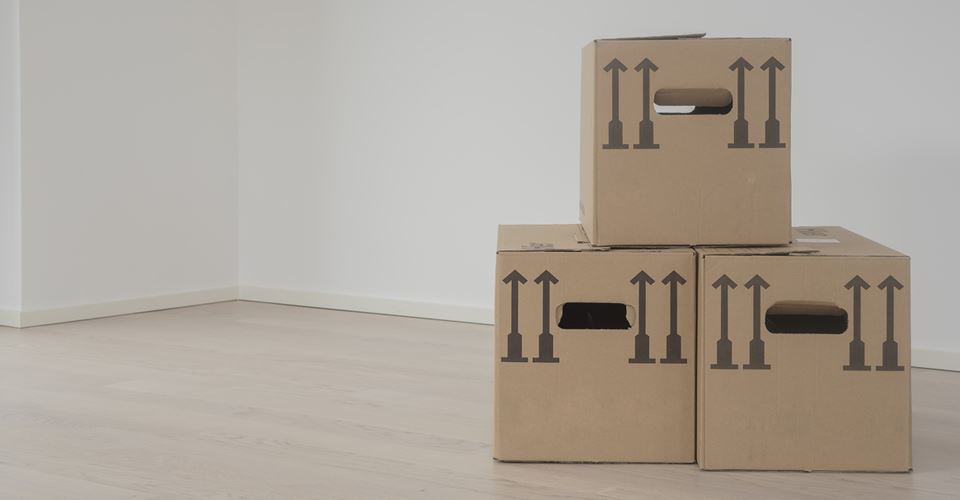Sorting through your rooms as part of the packing process is not an easy task. It may be especially difficult if you have a lot of clutter that has built up over the years. This is why having a well-thought packing plan for your move can make things much more organized. The process will take a while, so make sure you don't put it off until last minute. Start a few weeks before moving day and spend at least a day or two on each room. Starting early and taking it slow will make things less stressful, and it'll be less likely that something important gets overlooked in the rush of last minute packing.
 Create a schedule and stick to it. That way you won't waste time, and you'll ensure everything is organized and packed by moving day. When sorting through the rooms of your home, do so one at a time starting with the least-used room. You never want to pack up your kitchen weeks before your move and have no plates until you move out.
Create a schedule and stick to it. That way you won't waste time, and you'll ensure everything is organized and packed by moving day. When sorting through the rooms of your home, do so one at a time starting with the least-used room. You never want to pack up your kitchen weeks before your move and have no plates until you move out.
For every room you pack, you should:
- Make a list of items to pack and the order they should be packed
- Collect the necessary packing materials
- Set a time limit for packing each room
- Make sure each box is properly labeled once packed
Packing up a living room
Start out by sorting out items you don't want to bring to your new home. Perhaps there's an old couch or coffee table you aren't going to use, or maybe you plan on buying new living room furniture. You can donate furniture that is in good condition, but furniture in poor condition should be discarded.
Pack all pictures, lamps, vases and fragile items first before moving on to your television, sound system and other electronics. Finally, you'll need to pack your furniture. If possible, disassemble the furniture and properly protect anything that needs extra care.
Packing up the dining room
The dining room is often the least-used room of the home. Even if that's not the case, you could probably make do eating at the kitchen table or in the living room until after your move. This is a good place to start the process of packing and sorting as most of the items are fragile and need time to packed carefully.
Pack fragile items before anything else. These will include:
- Glass items
- China sets
- Lamp shades
- Pictures
- Showpieces or centerpieces
- Crystalware and ceramics
Make sure your silverware and flatware are packed separately -- away from glass or other breakable items. Once you've finished packing your fragile items, you can move on to furniture. Disassemble furniture as necessary and wrap everything in protective blankets and other cushioning.
Packing up a home office
It's ideal for your home office to be one of the first rooms you pack. This room may take some extra time to sort through, especially if you have a lot of files or books.
Identify any books that you don't want to keep -- examples include old textbooks or books of which you have a virtual copy. Unwanted books can be donated to a local library or sold online. Once you've lightened your book load, dust the rest off before you pack them, so they'll be clean and ready to be put away when you arrive at your new home. Pack your books into several small, sturdy boxes. Overloading one large box will make it difficult to lift on moving day.
Next, go through your files. Discard any files you won't need and organize the rest. Pack them into clearly labeled boxes, so you can keep them organized when unpacking.
Use sturdy boxes and proper packing techniques for your electronics. Make sure any wires are neatly wrapped and packed along with the electronics they go with. You may want to take a picture of where each wire plugs in, so that you can properly set up your electronic equipment in your new home.
Packing up other rooms (kitchen, bedrooms, bathrooms)
Use a similar method as above to pack your other rooms. When packing your bedroom, set aside some extra clothes. You should have enough clothes until after your move is complete.
The same should be done for the bathroom; pack an overnight bag with essential toiletries such as toothpaste, toilet paper and deodorant. The last thing you'll want is to not have easy access to these items when you absolutely need them.
Save your kitchen for last. Non-perishables such as canned goods and pasta can be packed, but perishables like frozen meat, bread or vegetables should be consumed or discarded. Kitchen tools and appliances should be packed into clearly labeled boxes.